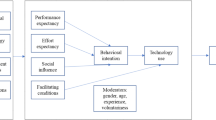Abstract
Innovation has both potential benefits and possible destructive effects when viewed by the worker. This article presents some of the thinking of the AFL/CIO concerning this issue. Several methods to ease the human cost of industrial innovation are discussed. Early warning systems, income maintenance, transfers and relocation are suggested as helpful.
The point is made that the best way to stimulate innovation is to make sure the economy of the nation is at full employment, with strong consumer demand and high utilization of national resources.
A discussion is presented about the shift in technology caused by the expansion of the multinational corporations. This technology shift has a significant impact on our economy and should be understood better and possibly controlled.
Another major point of the paper deals with safety and safety regulations as they relate to innovation and to the worker.
Similar content being viewed by others
Further reading
American Federation of Labor and Congress of Industrial Organizations,Labor Looks at Automation, Washington, DC, 1969.
Baranson, Jack, “Technology Exports Can Hurt Us,”Foreign Policy, Vol. 25, Winter 1976–77, pp. 180–194.
Biemiller, Andrew J., AFL-CIO, in. “Science, Technology, and the Economy,” Hearings before the Subcommittee on Science, Research, and Development of the Committee on Science and Astronautics, House of Representatives, July 27–29, 1971.
Boggs, Michael, AFL-CIO, July 17, 1979, Statement to Senate Subcommittee on Science, Technology, and Space and House Subcommittee on Science, Research and Technology, for U.N. — Conference on Science and Technology for Development (AFL-CIO, Washington, DC).
Gilpin, Robert,U.S. *Power and the Multinational Corporation, Basic Books, 1975.
Hayden, Eric W., “Technology Transfer to the Soviet Bloc,”MSU Business Topics, Winter 1976, pp. 11–23.
Johnson, Harry G., “Technological Change and Comparative Advantage: An Advanced Countries Viewpoint,”Journal of World Trade, Vol. 9, No. I, January–February 1975, pp. 1–14.
Levinson, Harold, Rehmus, Charles, Goldberg, Joseph P., and Kahn, Mark,Collective Bargaining and Technological Change in American Transportation, Evanston, IL, Transportation Institute of Northwestern University, 1972.
McLaughlin, Doris B.,The Impact of Labor Unions on the Rate and Direction of Technological Innovation, Institute of Labor and Industrial Relations, University of Michigan, 1979.
National Commission on Technology, Automation, and Economic Progress,Technology and the American Economy, Washington, DC, 1966.
Peters, E. Bruce, “Are We Giving Away Our Science and Technology?”Journal of Business Communication, Vol. 12, No. 2, Winter 1975, pp. 3–19.
Roberts, Markley, “Adjusting to Technological Change,”.The AFL-CIO American Federationist, February 1973.
Sharman, Ben,The Transfer of Science and Technology to the Less Developed Countries, February 1979, Background paper for Congressional Seminar on U.S. Conference on Science and Technology for Development (International Association of Machinists, Washington, DC).
Somers, Gerald G., Edward L. Cushman and Nat Weinberg, eds.,Adjusting to Technological Change, Harper & Row, 1963.
U.S. Department of Labor, Bureau of International Labor Affairs,The Impact of International Trade and Investment on Labor, 1978, especially Jack Baranson, “Technology Transfer: Effects on U. S. Competitiveness and Employment,” pp. 177–202.
U. S. Department of Labor, Bureau of Labor Statistics,Improving Productivity: Labor and Management Approaches, BLS Bulletin 1715, 1971.
U. S. Department of Labor, Bureau of Labor Statistics,Major Collective Bargaining Agreements, (series): “Severance Pay and Layoff Benefit Plans,” BLS Bulletin 1425–2, 1965; “Training and Retraining Provisions,” BLS Bulletin 1425–7, 1969; “Plant Movement, Transfers, and Relocation Allowances,” BLS Bulletin 1425–10, 1969; “Layoff Procedures and Recall,” BLS Bulletin 1425–13, 1971.
Author information
Authors and Affiliations
Additional information
This article is based on a statement by the Labor Advisory Committee on Industrial Innovation of the AFL-CIO.
Rights and permissions
About this article
Cite this article
Roberts, M. Harnessing technology: The workers' stake. J Technol Transfer 3, 53–64 (1979). https://doi.org/10.1007/BF02174850
Issue Date:
DOI: https://doi.org/10.1007/BF02174850




